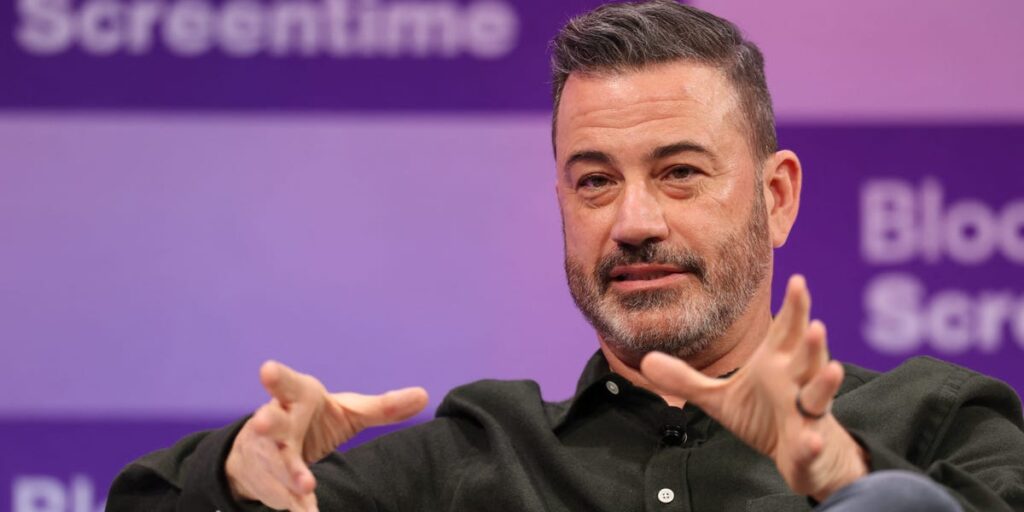Did you watch Jimmy Kimmel’s monologue last month — the one he did after Disney brought his show back?
Lots of people did: More than 6 million people watched his show on the night it returned — a huge number for Kimmel, and for late-night TV, period.
But way, way more people watched Kimmel’s performance on YouTube, where it has racked up some 22 million views.*
And that discrepancy tells you everything you need to know about the trouble that Kimmel’s show, and every other late-night show, is facing — regardless of who’s in the White House: Late-night TV viewing is a dying habit, even though stuff that appears on late-night can thrive on YouTube and other internet platforms.
And while it’s possible, in some circumstances, for TV show-makers to make some money from the views their stuff generates on the internet, it’s much less than they get from traditional TV views. So the current math doesn’t work.
And if you don’t believe me, listen to Kimmel himself, who is well aware of his split-screen reality:
“I’m very conscious of the fact that ABC pays for the show, and YouTube pays nothing — and YouTube gets to sell it and keep half the money. That’s quite a deal for them,” he said this month at Bloomberg’s Screentime conference.
But at the same time, Kimmel is quite clear that he’d much rather have YouTube around — both for his sake, and for anyone else who wants to tap into a giant audience.
“I love YouTube,” he told Bloomberg’s Lucas Shaw. “I love being on YouTube, because all you really want, deep down, is for as many people to see your stuff as possible. I know it’s hurt us, because it’s so easy to watch the monologue on YouTube now. I know it’s hurt the ratings — not just for our show, but for all of them.”
I write and talk and think about the tension between old media and the internet all the time. But this quick conversation does a great job of summing it all up. It’s worth your time:
Kimmel’s candor captures where all of TV is now: Caught between a shrinking business that still pays the bills and a massive digital audience that doesn’t.
It’s not sustainable, and at some point, TV shows that get most of their views on the internet are going to have internet budgets, not TV budgets. But it’s where we are now.
*Important: A YouTube “view” is different than a TV “viewer”, so these numbers aren’t apples to apples, as anyone who sells TV advertising will be happy to point out. But they are also directionally correct, as anyone who spends time thinking about internet media can tell you.
Read the full article here
















